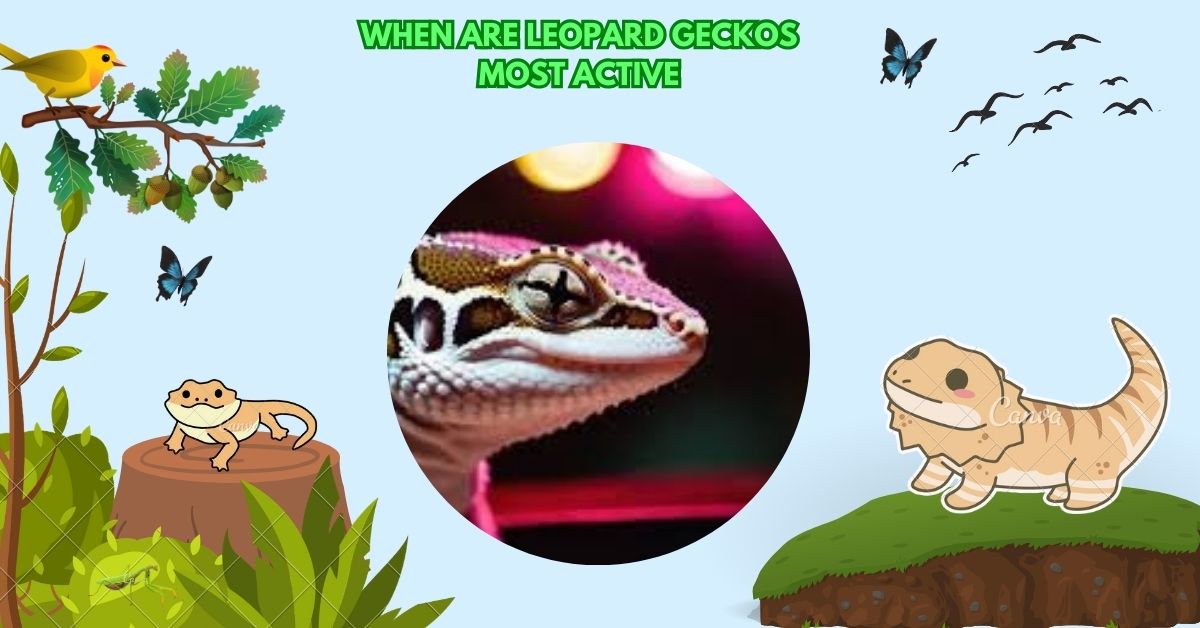Maintaining proper humidity levels in a leopard gecko’s tank is crucial for their health and well-being.
To lower humidity in a leopard gecko tank, use a dry substrate, improve ventilation with a mesh lid, avoid over-watering plants, and monitor humidity with a hygrometer to ensure optimal levels between 30-40%.
In this guide, we’ll discuss effective strategies to lower humidity in your leopard gecko’s tank, providing a comfortable environment for your pet.
Why Humidity Matters for Leopard Geckos
Understanding the importance of humidity is key to creating the right environment for your leopard gecko. Leopard geckos are adapted to survive in dry, desert-like conditions, so it’s essential to replicate these conditions in captivity. High humidity can lead to the following problems:
- Respiratory Infections: High humidity levels can make the environment conducive to bacterial growth, potentially leading to respiratory infections.
- Shedding Problems: Excess moisture can cause shedding issues, resulting in retained shed that can cause skin irritation or even infections.
- Digestive Issues: When humidity is too high, it can affect your gecko’s digestion, leading to impaction or bloating.
Ideal humidity levels for leopard geckos range between 30% and 40%. Anything higher can lead to the problems mentioned above. It’s essential to monitor humidity levels using a hygrometer to ensure that they stay within the safe range.
Signs of High Humidity in Your Leopard Gecko Tank
It’s important to be able to recognize when humidity levels are too high. Some signs to look for include:
- Condensation on Tank Walls: If you see water droplets on the sides of the tank, it’s a clear sign that humidity levels are too high.
- Moist Substrate: If the substrate (bedding material) feels damp or soggy, humidity may be excessive.
- Health Symptoms in Your Gecko: If your leopard gecko is having difficulty shedding, showing signs of respiratory distress, or exhibiting unusual behavior like lethargy, it could be due to high humidity.
By paying attention to these signs, you can take action quickly to lower the humidity and prevent any health issues.
1. Adjust Substrate to Reduce Moisture Retention
The type of substrate you use in your leopard gecko’s tank plays a major role in humidity regulation. Some substrates retain moisture and can increase humidity levels, while others help maintain a dry environment.
- Best Substrates for Low Humidity: Use substrates that don’t retain moisture. Reptile carpet, tile, or slate are great options because they are easy to clean and don’t absorb water. Paper towels or newspaper can also work well for a low-humidity setup.
- Avoid Moisture-Retaining Substrates: Substrates like coconut fiber, eco-earth, or sphagnum moss retain moisture and can elevate humidity levels. If you use these substrates, be prepared to monitor humidity more closely and change the substrate frequently.
By choosing the right substrate, you can effectively reduce moisture retention and help keep humidity at a manageable level.
2. Ensure Proper Ventilation
Good ventilation is crucial for lowering humidity in your leopard gecko’s tank. Proper airflow helps moisture escape and prevents the buildup of excess humidity.
- Use a Mesh Lid: A mesh lid allows for better airflow while still providing security for your gecko. Avoid glass or solid lids, as they can trap moisture inside.
- Increase Ventilation Holes: If your tank has limited ventilation, consider adding more holes to improve air circulation. Be sure the holes are small enough to prevent your gecko from escaping.
- Consider a Small Fan: If you live in a humid environment or struggle to reduce humidity, placing a small fan near the tank can help improve airflow and reduce moisture buildup.
Maintaining good airflow helps keep humidity levels stable and ensures that your leopard gecko has a healthy environment.
3. Control Room Humidity
Sometimes, the humidity of the room in which your gecko’s tank is located can contribute to high humidity levels inside the enclosure. Managing the humidity of the surrounding environment is just as important as controlling the tank’s internal conditions.
- Use a Dehumidifier: A dehumidifier is an excellent tool to lower the overall humidity in the room. This can help control the humidity inside your gecko’s enclosure as well. Make sure to keep the dehumidifier close enough to the tank for maximum effectiveness.
- Air Conditioning: If your room tends to be naturally humid, using air conditioning can help keep the overall moisture levels in check. Air conditioning not only lowers the room temperature but also helps to reduce humidity.
- Avoid Misting the Room: While misting the room may seem like a good idea to keep the air humid, it can actually raise the humidity in the tank. It’s best to focus on using methods that control the moisture at its source.
4. Control Water Source Placement
Water dishes are a key source of humidity in your leopard gecko’s tank. While it’s essential for your gecko to have access to fresh water, it’s important to place the water dish carefully to avoid increasing humidity levels.
- Use a Shallow Water Dish: A shallow water dish will reduce the amount of surface area exposed to the air, minimizing evaporation and moisture buildup.
- Place the Dish Away from the Heat Source: Keep the water dish away from the heat lamp or other heat sources. When the water dish is placed near heat, evaporation rates increase, which can raise humidity in the tank.
Regularly clean and change the water in the dish to prevent mold or bacteria buildup, which could contribute to humidity problems.
5. Regulate Heating in the Tank
Maintaining a proper heat gradient is essential for your leopard gecko’s health. The heat source can also influence the humidity levels in the tank, so it’s important to use it correctly.
- Heat Lamp or Ceramic Heat Emitter: A heat lamp or ceramic heat emitter will help maintain a warm environment and also promote evaporation, which can reduce humidity.
- Avoid Excessive Heating: Too much heat can cause the substrate to dry out too quickly, which may result in stress for your gecko. Ensure that the temperature gradient stays between 85°F to 90°F on the warm side and around 70°F to 75°F on the cool side.
- Temperature Control: A thermostat is a great tool for keeping temperatures within the desired range. By maintaining the proper heat, you can also help regulate humidity.
By carefully balancing heating and humidity, you can create the perfect environment for your leopard gecko.
6. Monitor Humidity with a Hygrometer
The best way to keep track of humidity in your leopard gecko’s tank is by using a hygrometer. This simple tool measures the humidity level in the tank and gives you real-time feedback, so you can make adjustments as needed.
- Digital Hygrometers: Digital hygrometers are easy to read and can provide accurate humidity readings.
- Analog Hygrometers: Analog hygrometers are more affordable but may not be as precise as digital models. Still, they can give you a general idea of humidity levels.
- Place the Hygrometer at Different Points: Place the hygrometer near the substrate and near the air to get an accurate reading of the tank’s humidity at different levels.
By monitoring humidity regularly, you can make immediate adjustments if the levels rise above the optimal range.
7. Maintain a Dry Environment by Reducing Dampness
Excess moisture is the primary contributor to high humidity levels. Therefore, reducing dampness in the tank will significantly help in lowering humidity.
- Remove Moisture After Cleaning: After cleaning the tank, ensure that there is no residual moisture in the tank, substrate, or decor. Any wet areas can increase humidity.
- Don’t Overwater Plants: If you have live plants in the tank, make sure you don’t overwater them. Live plants can contribute to humidity, so it’s best to keep them dry and only water them when necessary.
8. Don’t Overcrowd the Tank
Overcrowding your leopard gecko’s tank can contribute to higher humidity levels. More reptiles or decor in the tank means more moisture can accumulate, especially if you have multiple heat sources or water dishes.
- Use Appropriate Tank Size: Make sure that your gecko’s tank is large enough for them to move around comfortably. A 20-gallon tank is sufficient for one leopard gecko, and larger tanks are necessary for multiple geckos.
- Remove Excess Decor: Avoid overcrowding the tank with too many plants, rocks, or other decor items that can trap moisture and contribute to high humidity.
9. Use Dry Sand for the Humid Hide
A humid hide can provide your leopard gecko with a moist area to shed, but it’s important to keep this environment separate from the rest of the tank. Using dry sand or a non-moisture-retaining substrate in the rest of the tank will help control humidity in the larger area.
10. Create a Balanced Habitat
Finally, the key to successfully lowering humidity in your leopard gecko’s tank is balance. You need to maintain the proper humidity while ensuring your gecko has a suitable environment to thrive. Adjust humidity, temperature, and substrate levels based on your gecko’s needs and the climate in which you live.
FAQs
How do I lower the humidity in my leopard gecko’s tank?
To lower humidity, use dry substrates, ensure good airflow with a mesh lid, and monitor humidity levels regularly with a hygrometer.
How can I lower the humidity in my tank quickly?
Quickly lower humidity by removing excess water, adjusting ventilation, and ensuring the substrate is dry. Use a fan if needed.
What happens if leopard gecko humidity is too high?
High humidity can cause respiratory problems, shedding issues, and skin infections. It may also lead to stress for your gecko.
Is 50% humidity good for a leopard gecko?
50% humidity is too high for a leopard gecko. Ideal humidity is between 30-40% to keep them healthy and comfortable.
How do I make my lizard tank less humid?
To reduce humidity, avoid moist substrates, increase ventilation, and keep water dishes shallow and away from heat sources.
How to get humidity lower?
To lower humidity, remove excess moisture, adjust ventilation, and monitor humidity regularly with a hygrometer for accurate control.
Where should the humid hide be in a leopard gecko tank?
Place the humid hide on the cooler side of the tank to provide a moist retreat while maintaining a dry environment.
How to control humidity in a box?
Control humidity in a box by adjusting ventilation, using dry bedding, and monitoring moisture levels with a hygrometer regularly.
How often should I mist my leopard gecko?
Leopard geckos don’t need regular misting. Only mist occasionally to help with shedding or if humidity is too low.
Do leopard geckos need a dehumidifier?
Leopard geckos don’t need a dehumidifier unless you live in a very humid area. Adjust tank ventilation and humidity as needed.
Conclusion
Lowering humidity in your leopard gecko’s tank requires a combination of strategies, from adjusting substrates and water sources to improving ventilation and heating. By keeping humidity levels between 30% and 40%, you can create a healthy and comfortable environment for your gecko. With regular monitoring and small adjustments, you can ensure that your leopard gecko lives a long, happy, and healthy life.





